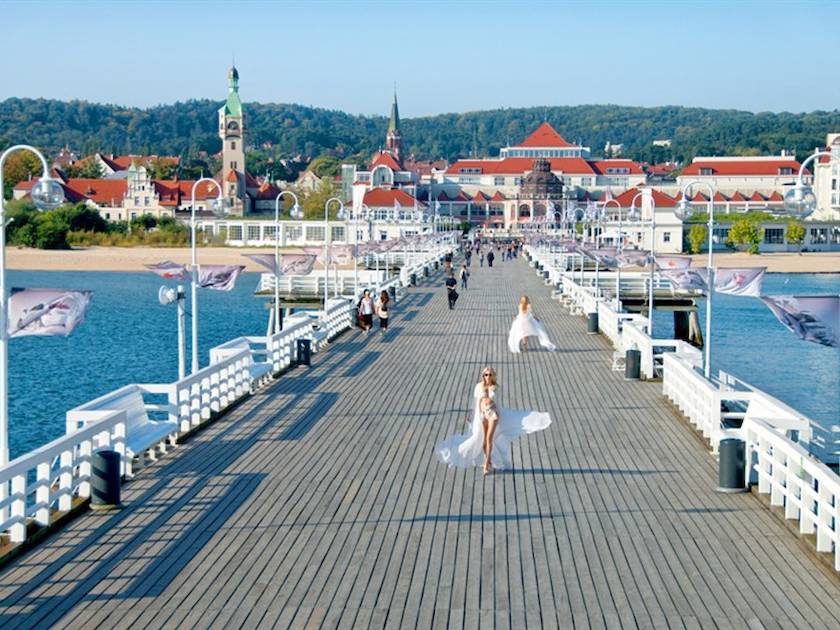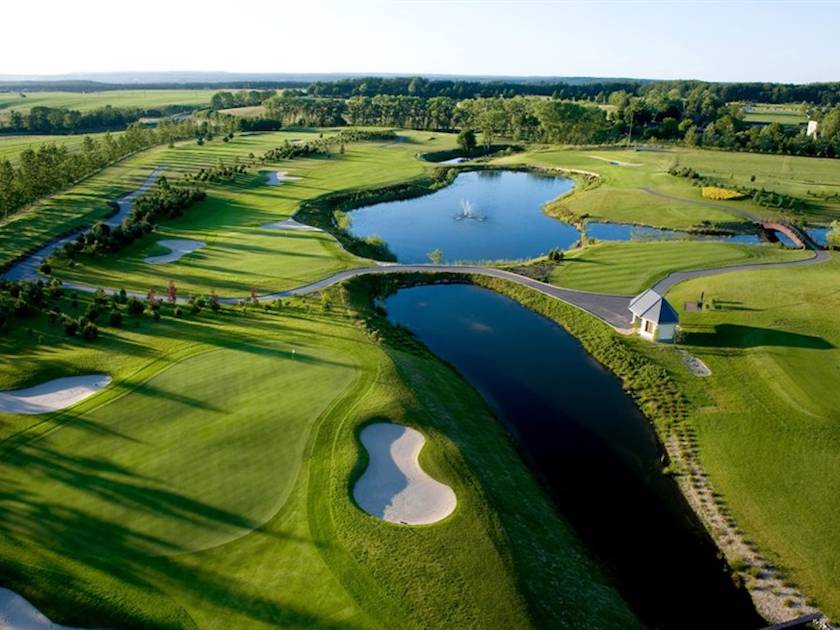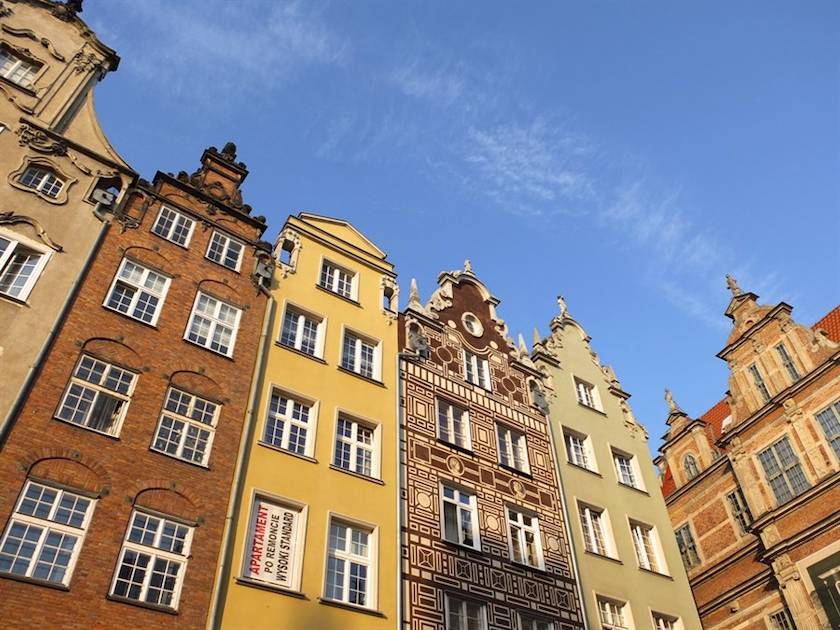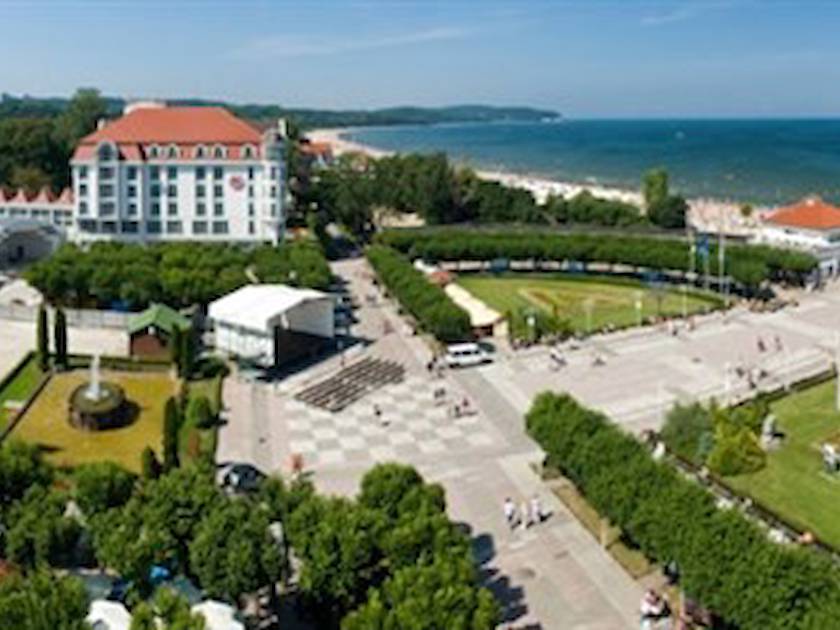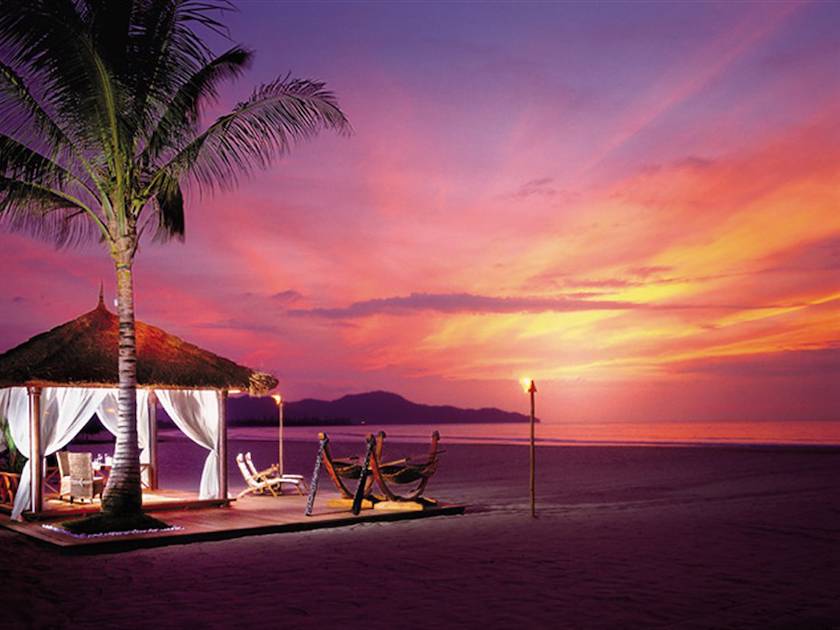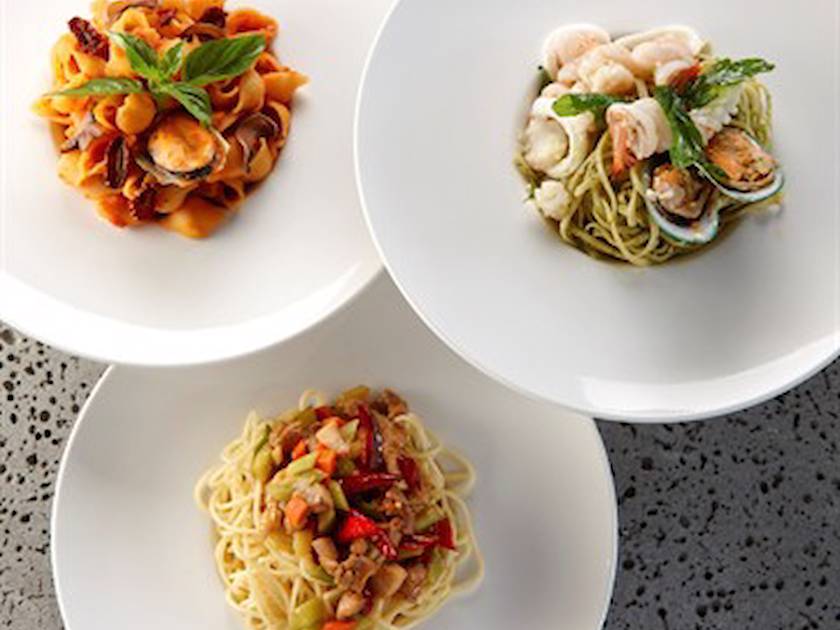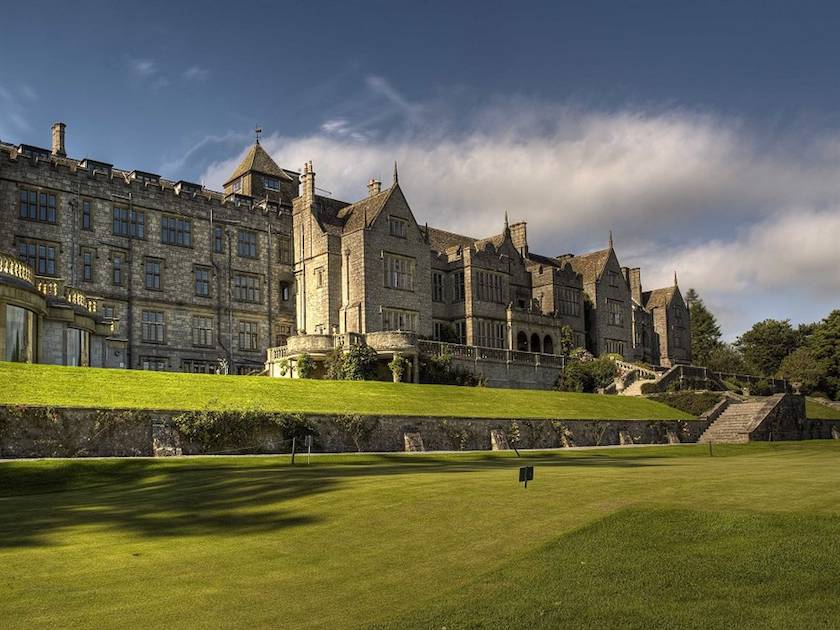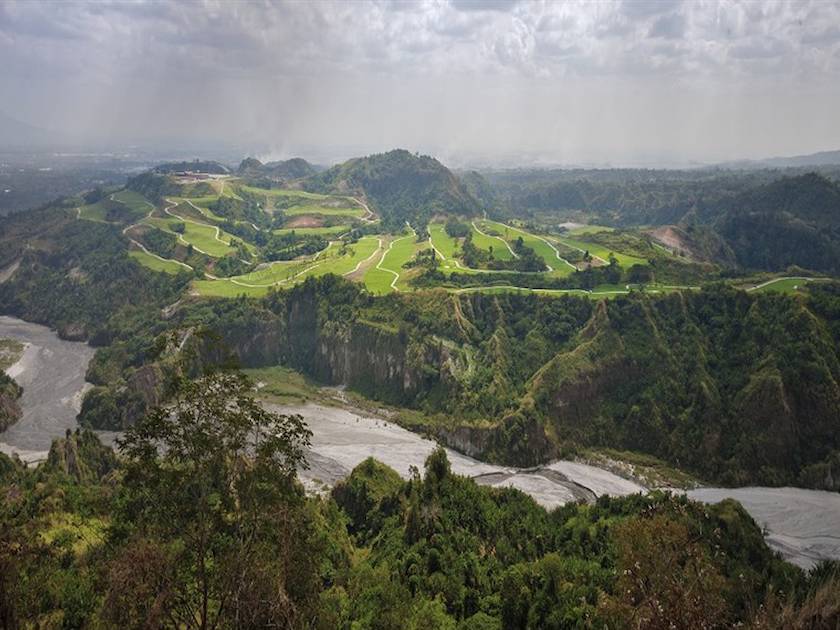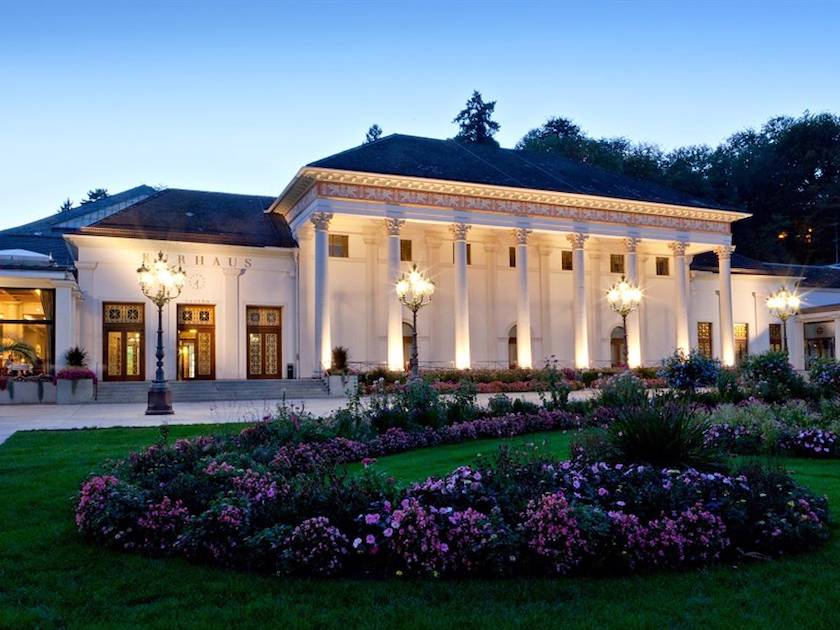The Polish golf revolution
Golfing in Gdansk. Three words that I didn’t think I’d use in the same sentence. Poland may not be the obvious choice for a European golfing holiday, but on a recent trip to the Baltic coast I discovered that it’s a worthy up-and-coming golf destination.
Golf is relatively new to Poland. The oldest golf club was opened in 1906 but after WW2, when Stalin imposed communism on the country, it was considered an elitist sport and banned. With the fall of communism, golf’s renaissance began in the early 1990s; now the country has 12 modern championship 18-hole golf courses and 19 nine-hole courses, and the number is growing. And because there are relatively few Polish golfers there are plenty of empty fairways. The historic city of Gdansk – part of an area known as the Tri-City, along with the modern port of Gdynia and the coastal spa resort of Sopot – is easily accessible thanks to low-cost airlines, and there are several high-quality, wallet-friendly courses within easy reach.
SUPER SIERRA. My first stop was the Sierra Golf Club and it was an impressive introduction to Polish golf. The Cameron Sinclair-designed course, which opened in 2002, is beautifully set along the edge of a forest. The quality and condition of the course is first class, with back-to-back par-5s – including a tricky 6th, with a bunker and trees on the left and an out-of-bounds area on the right. The back nine is more undulating, and the 16th proves a good test, with water to the front and left and a bunker to the back right. I spend the night in the newly constructed Sierra Apartments, looking out across the course. They are roomy and modern, ideal for those looking to play-and-stay. Dinner in the elegant clubhouse is a treat with zurek, a traditional Polish soup, to start followed by fresh salmon, along with some award-winning Polish beer.
BY THE SEA. Southeast of Sierra is Gdynia, which has been awarded the covetable title of ‘most liveable place in Poland’. It’s a relatively young city, born out of the 1919 Treaty of Versailles. When the League of Nations created the Free City of Gdansk, neighbouring Gdynia was in the newly reformed Polish state at the end of a narrow strip of land that gave Poland access to the sea. Once a quiet fishing village, Gdynia soon became the focus of huge development. Construction of a new city and massive port to rival that of German-controlled Gdansk was completed by 1926. Today, its history is played out in its mix of architecture, with Art Deco buildings from the 1920s and 30s rubbing shoulders with stark structures from the post-war era and modern, post-communist edifices.
SPA RESORT. I head east to Sopot, sandwiched between Gdynia and Gdansk, and the smallest of the Tri-Cities. It became a fashionable resort in the early 19th-century, when a former doctor from Napoleon’s army popularised the benefits of taking to the waters. In 1823, he opened the first bathhouse and for the best part of 200 years it was one of Europe’s finest spa resorts. Like much of Poland, Sopot was hard hit by the Second World War and thereafter by a lack of funds. But since 1989, it too has had a major facelift and the self-styled Monte Carlo of Poland is back as the beach destination of choice for the rich and famous, with a lively bar and club scene. Wandering along Sopot’s main street, the pedestrian Monte Cassino (named after the 1944 battle) is bustling as people spill out of cafes, bars and restaurants. I stop at a pump-house to taste the water from St Adalbert’s spring. It’s filled with an impressive array of minerals and is said to cure a variety of ailments. Perhaps that’s why the locally brewed beer tastes so good?
LUNCH AL FRESCO. Away from the hustle and bustle of the centre, I have lunch al fresco at Bulaj Restaurant. Here the young Polish chef, Artur Moroz uses local, seasonal ingredients to create a contemporary take on traditional dishes. It’s a revelation; if you’re guilty of thinking Polish cuisine is limited to dumplings and gherkins, this is place to come. I feast on cod carpaccio, smoked mackerel and perfectly cooked zander, but it’s not just fish on the menu. I follow it with goose breast that had been smoked for six months and deer fillet with Polish ‘truffle’, morel mushrooms. All paired with some fine Polish wine and rounded off with a barley vodka digestif that tastes like grappa. Afterwards, I work off the gastronomic treats with a walk along the beach, where I can’t resist dipping my toes into the rather chilly Baltic, and along the famous Molo. Thought to be Europe’s longest wooden pier, it stretches for over half a kilometre into the Bay of Gdansk.
GDANSK. Then it was time for the handsome Hanseatic port city of Gdansk, the jewel of Poland’s Baltic coast. I walk through the Golden Gate and along Dluga (the main pedestrianised street) and part of the Royal Way. This was where the King of Poland would collect taxes from the wealthy merchants, entering the old town at the 16th-century Upland Gate and not stopping until he reached the River Motlawa. The city was razed to the ground in WW2 but you’d never know it. It’s been painstakingly rebuilt and Dluga showcases the beautiful gabled guild-houses from its days as an important trading port. I go through St Mary’s Gate to find narrow Mariacka Street glowing with gold – Baltic gold that is, otherwise known as amber. Steps lead down to the cobblestone street from beautifully decorated buildings filled with a treasure trove of amber jewellery in all shapes and sizes.
BIRTHPLACE OF SOLIDARITY. I soon reach the atmospheric Gdansk Shipyards, the birthplace of the Solidarity movement. It was in 1980 that electrician turned trade-union activist Lech Walesa began a strike that was the beginning of the end of the Soviet bloc. Now the abandoned red brick warehouses are being turned into smart apartments and the European Solidarity Centre – a striking piece of architecture holding a fascinating museum, library and research centre – has just opened in a celebration of democracy and freedom, next to a monument to those who died in the struggle to get it. After an hour’s drive to Elblag (pronounced el-blonk), I check in to the Hotel Elblag, a contemporary boutique hotel with some stylish design touches. It’s right in the centre and after a quick dip in the pool, I set off to explore. The hotel is within sight of the 14th-century Market Gate, one of Elblag’s few original buildings. The small city has a tumultuous history: centuries ago, it became a stronghold and port of the Teutonic Knights, who built the impressive medieval castle of Malbork, 30 kilometres to the south-west. When they fell from power, it came under the Polish crown, then the Kingdom of Prussia and finally Germany. The Red Army levelled it in 1945 and, after expelling its German citizens, it became part of Poland once more. It wasn’t until the 1990s that the authorities decided to rebuild it and now the old/new streets are back to an approximation of their splendid best, with the old-style Hanseatic merchants’ houses graced with some modern twists. Set on the River Elblag is Poland’s first shipyard, built around 1570. The river flows into the Vistula Lagoon about 10 kilometres north, giving boats access to the Baltic through the Russian-controlled Strait of Baltiysk – if the Russians are feeling generous. The city also has a long brewing tradition so my dinner at the hotel is a juicy fillet steak, washed down with the some of the tasty local beer.
SAND VALLEY GOLF. The following morning, I set off for my second golf course, Sand Valley Golf and Country Club, just 20 minutes from Elblag. It’s a lovely course, standing on a 20 metre-high hill, overlooking the surrounding countryside. Completely different to Sierra, it’s an inland links-style course, sand based with wide, open fairways – up to 150 metres in places. There’s little water in play, heavily contoured greens, pot bunkers and huge waste bunkers, one of which is almost half a kilometre across and spread over three fairways. Hands-on architect Tony Ristola oversaw the design, and it’s a course that’s meant to be walked. Approach is everything: on the par-4 9th, the green sits on a plateau on the far side of a canyon; the par-5 15th has a huge dogleg to the left, and nudging 70 metres, the 18th green is long and steep. Sand Valley’s newly constructed villas, a minute’s walk from the clubhouse, have been built with golfers in mind. They hold from four to 12 people – with a spacious living area and fully fitted kitchen, perfect for families or groups of golf buddies. Each villa has its own terrace with comfortable seating and a plunge pool. Some villas even come with a sauna.
VODKA SHOTS. Barbeques are on offer most evenings but I head back to Ehlblag for a lively dinner, including Polish favourite smalec (pork lard with onions and garlic), slathered on to rye bread, and a hearty meat kebab. It was washed down with shots of Luksusowa – one of Poland’s oldest vodkas, distilled from potatoes – and interrupted by increasingly frequent toasts. And the beauty of good-quality vodka is that it doesn’t give you a hangover. My final golfing stop was the Gdansk Golf and Country Club, otherwise known as Postolowo. It’s incredibly picturesque and, at 7,101 metres, the longest course in Poland and the second longest in Europe, with a sense of space and a lack of rush that characterises this region. Designed by British architect Jeremy Turner, it’s a dramatic course with water as a main feature – there’s a magnificent lake at the centre – and more than one signature hole. The 4th is a brilliant par-5 called ‘Where Eagles Dare’, and if you dare take the 16th – appropriately named Alcatraz – from the Championship tee, you will have to carry more than 200 metres over water. Postolowo doesn’t have accommodation but there’s a friendly clubhouse and I had a hearty meal before the 30-minute journey back to the airport. It was a great way to end my introduction to this fascinating area of Poland and what’s sure to be an increasingly popular golf destination. It makes for a great combination of golf, history and culture; perfect for golf enthusiasts with an eye for a bargain and a love of a challenging course – with first-rate beer and vodka as a bonus.
GETTING THERE
Wizzair operates several direct flights daily from London Luton Airport to Gdansk
WHERE TO STAY
Hotel Elblag - www.hotelelblag.eu
GOLF COURSES
Sierra Golf Club - www.sierragolf.pl
Sand Valley Golf and Country Club - www.sandvalley.pl
Gdansk Golf and Country Club – Postolowo - www.postolowo.com
More information
Poland - www.poland.travel
Warmia and Masuria region - www.mazury.travel
Pomorskie region - www.pomorskie.travel

Journalist
